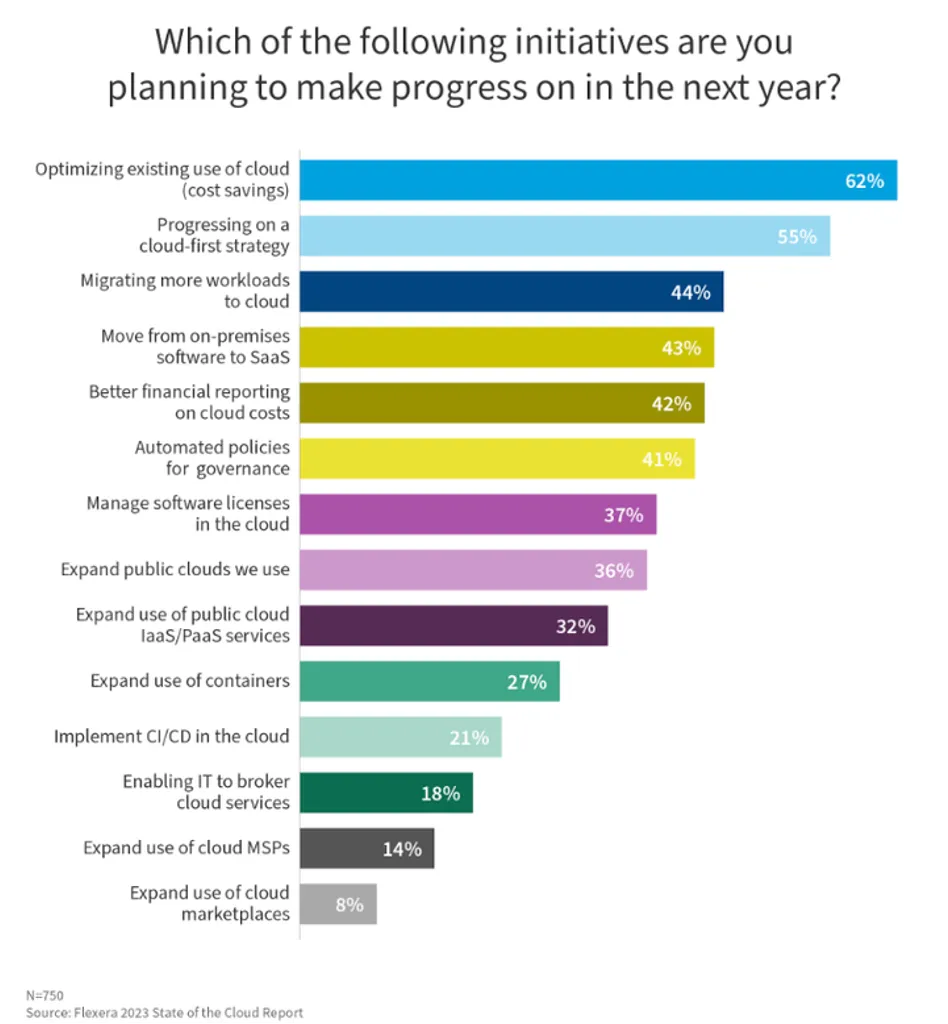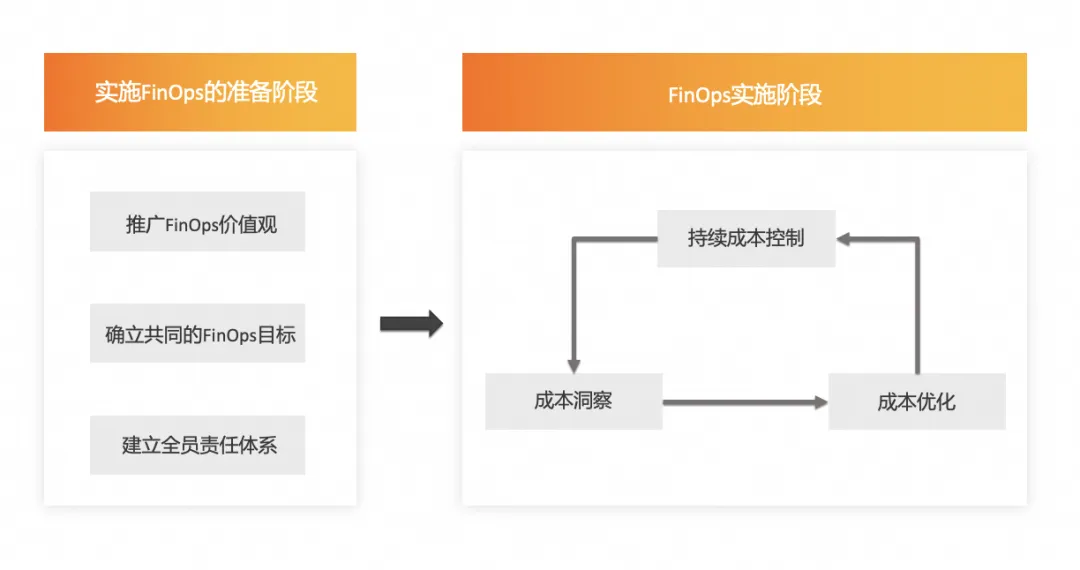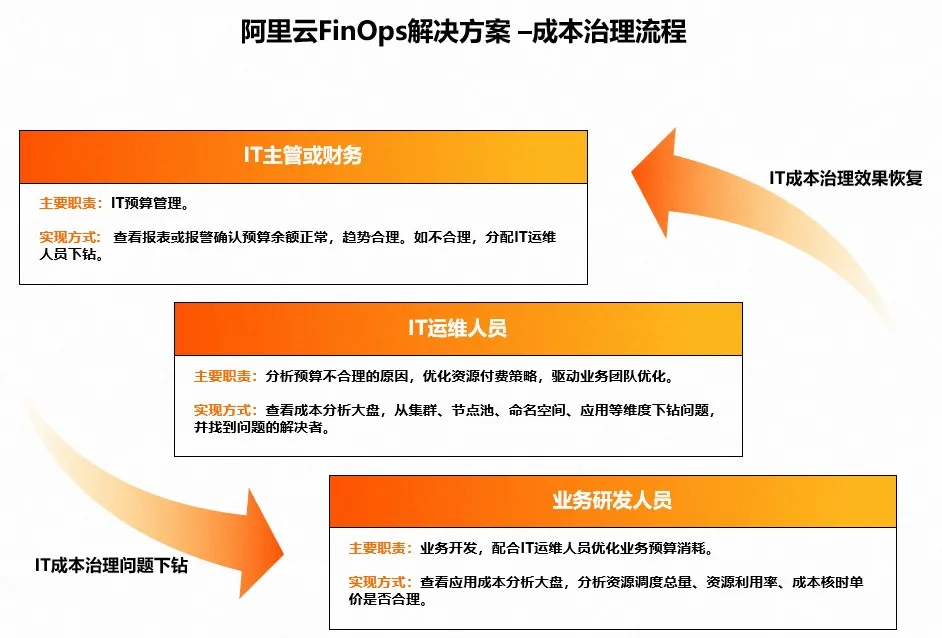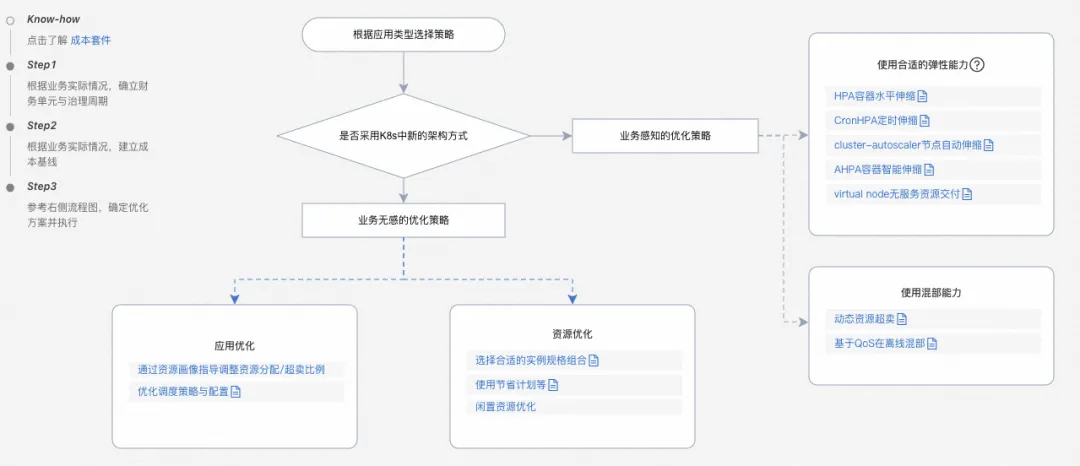Author: Jing Qi
Preface
With the rapid development of cloud computing in recent years, the digital transformation of enterprise IT has entered the "deep water zone", and attention to the good use of the cloud has gradually increased. The "Flexera 2023 State of Cloud Computing Report" shows that cloud cost management optimization has jumped to the top of cloud management teams' to-do lists for next year. FinOps (financial operations) as a new operating model has gradually entered the field of vision of cloud management teams.

FinOps, that is, "Finance" + "DevOps" , is a combination of enterprise cloud financial management culture and practices. In the context of cloud computing, the core goal of FinOps is to enable organizations to achieve cost predictability, transparency, and accountability for cloud resources, thereby ensuring that spend is controlled and optimized while pursuing technological agility and innovation.
According to the FinOps Foundation’s definition, “FinOps is an evolving cloud financial management discipline and cultural practice that enables organizations to derive maximum business value by helping engineering, finance, technology and business teams collaborate to make data-driven spending decisions. "
FinOps overall process
Enterprise FinOps implementation is not a one-time project, but a systematic project related to the enterprise's internal management mechanism. It is a process of repeated iterations and continuous operations. To achieve the desired results from FinOps implementation, companies need to build internal FinOps systems and teams in the preparation stage, complete cultural changes, and establish clear FinOps strategic goals. During the implementation phase, enterprises need to establish comprehensive resource and cost monitoring, select appropriate cost optimization strategies, and form a long-term operation mechanism so that cloud costs can be effectively and continuously controlled.

Preparatory phase before implementing FinOps
For companies planning to implement FinOps, the FinOps preparation phase is essential. The preparation phase involves not only strategy formulation, but also a change in awareness and culture, which determines whether FinOps implementation can proceed smoothly and achieve the desired results. In the preparation stage, three main elements need to be paid attention to: cultural popularization, strategic synchronization, and shared responsibilities.
3.1 Cultural popularization: Promote the values of FinOps
If an enterprise wants to implement FinOps, it must first lay the groundwork at the cultural level to ensure that every team member can understand and accept the FinOps concept.
Especially in cloud-native scenarios, resources and costs are highly dynamic and rely on the collaborative management of multiple functional teams such as operation and maintenance, business, and finance. This leads to the need for each member to develop a good cost awareness and take the initiative in daily work. Consider the cost. Enterprises need to use appropriate methods to promote FinOps culture and continue to build cost awareness among all employees. Possible approaches include:
- Organize comprehensive training activities: introduce the basic principles and practices of FinOps to all employees by holding online courses and seminars to ensure that all employees understand its impact and value on the enterprise.
- Promote excellent cases: Use internal forums, news and other channels to continuously share FinOps success cases and cost-saving techniques to promote the precipitation and replication of excellent experience.
- Hold regular cost management meetings: review and review some problems encountered in cost management to promote continuous improvement.
Popularizing FinOps culture not only helps reduce cloud costs, but also improves the enterprise's adaptability to market changes and the agility of decision-making. Through cross-department collaboration and education, a FinOps culture can be the driving force that drives companies toward greater efficiency, transparency, and innovation.
3.2 Strategic same frequency: establishing common FinOps goals
After determining FinOps as a corporate culture that needs to be popularized, companies still need to reach an agreement at the strategic level. This requires building consensus among members from the top to the bottom of the organization, establishing shared FinOps goals, and tightly aligning these goals with the company's overall strategy. Clarity of goals, upper-level support, collaboration between departments, and incentive mechanisms based on cost control are all key elements to ensure that an enterprise's FinOps strategy is aligned and effectively implemented.
- Develop clear strategic goals: Identify long-term and short-term goals for implementing FinOps, as well as strategic approaches to achieve those goals.
- Upper-level support: Ensure that the company’s upper-level leaders understand and support FinOps and regard it as an important factor in promoting the company’s development.
- Cross-department collaboration: Integrate the resources and strengths of different departments to form a linkage effect and jointly promote the implementation of cost optimization strategies.
- Improve appraisal and incentives: Incorporate cost management capabilities into employee performance appraisal indicators to encourage everyone to actively participate in cost control. Reasonably set optimization goals based on the actual situation, such as resource idle rate, cost savings, etc., quantify the unified value of resource use in each department, and implement appropriate reward and punishment measures based on the optimization results within the cycle.
3.3 Shared responsibilities: Establish a responsibility system in which all employees participate
Before FinOps is implemented, enterprises also need to build a responsibility system shared by all employees to ensure that all employees can assume corresponding responsibilities during the implementation process and jointly promote the achievement of FinOps goals.
- Clarification of roles and tasks: Clarify the responsibilities and tasks of each role in FinOps implementation, and determine the responsibilities that business, operation and maintenance, finance and other teams need to bear.
- Feedback and communication mechanism: Establish a regular review mechanism to evaluate the effectiveness of FinOps implementation and timely adjust and optimize strategies.
- Build a cross-functional team: Create a FinOps team composed of representatives from various departments, specifically responsible for monitoring, analyzing and optimizing cloud costs, and can jointly promote cost optimization from technical, financial and other perspectives. The team needs to have a complete knowledge system, with capabilities in project management, data science, financial analysis, and software/infrastructure development, and can measure the execution and delivery capabilities of each department against cost optimization goals.
The preparation phase for implementing FinOps is an important step in establishing the culture, strategy, and responsibilities within the organization. By popularizing FinOps culture, ensuring that company strategy and cost optimization are on the same page, and building a system of shared responsibilities among all employees, we can lay a good foundation for subsequent FinOps practices.
FinOps implementation phase
4.1 Cost Insights
Cost insight is the first step in implementing FinOps, and it also runs through the entire FinOps process. Organizations need to build a cost monitoring system, with key capabilities including: business cost allocation, resource monitoring, cost forecasting, etc.
Especially under the cloud native architecture, the sharing and dynamics of resources also bring new technical challenges to cost allocation. Organizations can generally use cloud native FinOps tools to solve the problem of business cost allocation. The ACK cost suite also provides the ability to create a cost insight dashboard and a cost data export API. Users can directly use the dimensionally rich cost insight dashboard, or build an internal FinOps system based on the cost API. For details, please see: How to split cluster costs according to departments/applications [ 1] .
During the implementation phase, different roles in the organization have different perspectives on cost insights due to their different responsibilities.

- The IT director or finance takes a global view to see whether the total cost is within budget and whether cost trends are normal.
- When the cost is abnormal, IT operation and maintenance personnel can check whether the resource payment strategy can be optimized from the resource level, or check the department or business that caused the cost abnormality, and drive down the business team to check.
- Business R&D personnel check the resource usage of the corresponding business, analyze the reasons for rising costs, and evaluate optimization strategies.
4.2 Cost optimization
In the cost optimization stage, organizations need to evaluate the optimizable space based on resource levels, and then determine optimization strategies based on business conditions. Typical optimization strategies that can be adopted by Alibaba Cloud ACK clusters can be divided into the following aspects according to whether they are business-aware:

4.2.1 Choose a business-insensitive optimization strategy
For the common waste caused by low resource utilization in enterprises, or if they want to optimize costs without adjusting the architecture, we can optimize from the aspects of resource allocation or payment strategies.
- Optimize application resource allocation: adjust resource application/restriction values through resource portraits [ 2] and optimize scheduling strategies.
- Adjust cloud resource procurement strategies: adjust instance specification combinations, optimize payment strategies, and clean up idle resources.
4.2.2 Select business-aware optimization strategies
Use appropriate elastic capabilities: elastic scaling is a widely adopted function of ACK. Typical scenarios include online business elasticity, large-scale computing training, deep learning GPU or shared GPU training and inference, scheduled periodic load changes, etc. Divided from the scaling dimension, it can include workload scaling: typical such as container horizontal scaling (HPA) [ 3] , container scheduled scaling (CronHPA) [ 4] , container intelligent scaling (AHPA) [ 5] ; node scaling: typical such as node automatic scaling Scaling [ 6] , virtual-node serviceless resource delivery [ 7] , instant elasticity [ 8] .
Use co-location capabilities: Typical examples include dynamic resource overselling [ 9] to fully exploit the allocated but unused resources in the cluster; or make full use of resources by simultaneously deploying online services and offline applications in offline co-location [ 10] .
4.3 Cost control
Cost control is a very important part of the FinOps governance process. After cost insight and cost optimization are completed, cost control can be used to ensure that the entire cost governance process is under control, preventing cluster and application costs from exceeding limits or growing too fast due to a long cost governance cycle.

Conclusion
For enterprises, FinOps is not just a technology solution, but a more flexible way to handle cloud cost optimization. Although technology is the main means to optimize costs, technical personnel cannot fully evaluate the business value. This is the main reason why the FinOps concept advocates full employee participation and the establishment of cross-functional teams. In addition, FinOps also emphasizes data-driven business decisions, clear institutional systems and continuous investment, which allows enterprises to control and optimize expenditures while pursuing technological agility and innovation.
Related Links:
[1] How to split cluster costs by department/application
https://help.aliyun.com/zh/ack/ack-managed-and-ack-dedicated/user-guide/cost-analysis-overview
[2] Resource portrait
https://help.aliyun.com/zh/ack/ack-managed-and-ack-dedicated/user-guide/resource-profiling
[3] Container horizontal scaling (HPA)
https://help.aliyun.com/zh/ack/ack-managed-and-ack-dedicated/user-guide/horizontal-pod-autoscaling
[4] Container scheduled scaling (CronHPA)
https://help.aliyun.com/zh/ack/ack-managed-and-ack-dedicated/user-guide/cronhpa
[5] Container Intelligent Scaling (AHPA)
https://help.aliyun.com/zh/ack/ack-managed-and-ack-dedicated/user-guide/ahpa-overview-1
[6] Node automatic scaling
https://help.aliyun.com/zh/ack/ack-managed-and-ack-dedicated/user-guide/auto-scaling-of-nodes
[7] virtual-node serviceless resource delivery
[8] Instant flexibility
https://help.aliyun.com/zh/ack/ack-managed-and-ack-dedicated/user-guide/instant-elasticity
[9] Dynamic resource oversold
[10] Mixing in offline mode
RustDesk suspends domestic services due to rampant fraud Apple releases M4 chip Taobao (taobao.com) restarts web version optimization work High school students create their own open source programming language as a coming-of-age gift - Netizens' critical comments: Relying on the defense Yunfeng resigned from Alibaba, and plans to produce in the future The destination for independent game programmers on the Windows platform . Visual Studio Code 1.89 releases Java 17. It is the most commonly used Java LTS version. Windows 10 has a market share of 70%, and Windows 11 continues to decline. Open Source Daily | Google supports Hongmeng to take over; open source Rabbit R1; Docker supports Android phones; Microsoft’s anxiety and ambitions; Haier Electric has shut down the open platform